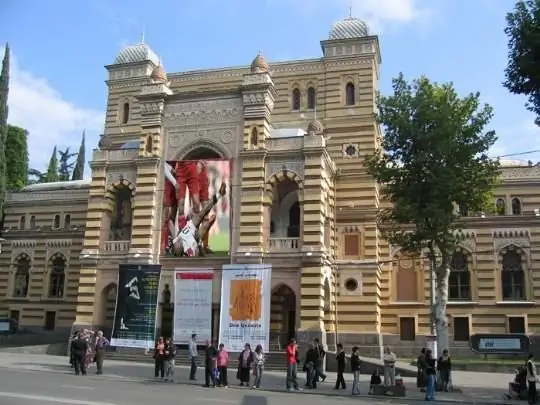
Description of the attraction
The Georgian Opera and Ballet Theater, located in the city of Tbilisi, is the largest musical theater in the country. The city theater was founded in 1851 by the governor Mikhail Vorontsov. At the same time, its construction began in April 1847. The author of this project was the famous architect Antonio Scudieri. The famous Russian artist G. G. Gagarin.
Despite the fact that there were several more theaters in Tbilisi in 1851, the Opera and Ballet Theater quickly became the center of the city's cultural life. In November 1851, the opening of the first theatrical season took place with the production of Lucia di Lammermoor by G. Donizetti. The repertoire of the Georgian Opera House consisted mainly of operas by G. Verdi, G. Rossini, G. Meyerbeer, G. Donizetti, V. Bellini, F. Aubert, F. Halevy, V. Mozart.
In October 1874, due to a strong fire, the theater building was destroyed. The fire burned down the sets, costumes, music library and instruments, as a result of which the institution was closed. The theater's new life began in 1896 in a new building. The theatrical season opened with the production of Glinka's opera Ivan Susanin. The operas of such Georgian composers as Z. Paliashvili “Abesalom and Eteri” and “Daisi”, Dolidze's opera “Keto and Kote”, Arakishvili “The Legend of Shota Rustaveli”, M. Balanchivadze “Insidious Tamara ", Tsintsadze" The Hermit "and many others.
Over the long years of operation, the theater has produced many famous figures of culture and art, including I. Paliashvili, after whom the theater was named in 1937. It was here that the career of the future founders of the Georgian Folk Dance Ensemble, N. Ramishvili and I. Sukhishvili, began.
At the end of the twentieth century. the theater gradually began to decline. In the post-war period, the state did not have enough funds to maintain it. At the beginning of the 2000s. local authorities radically changed their attitude towards the Georgian Opera and Ballet Theater and started sponsoring it.






